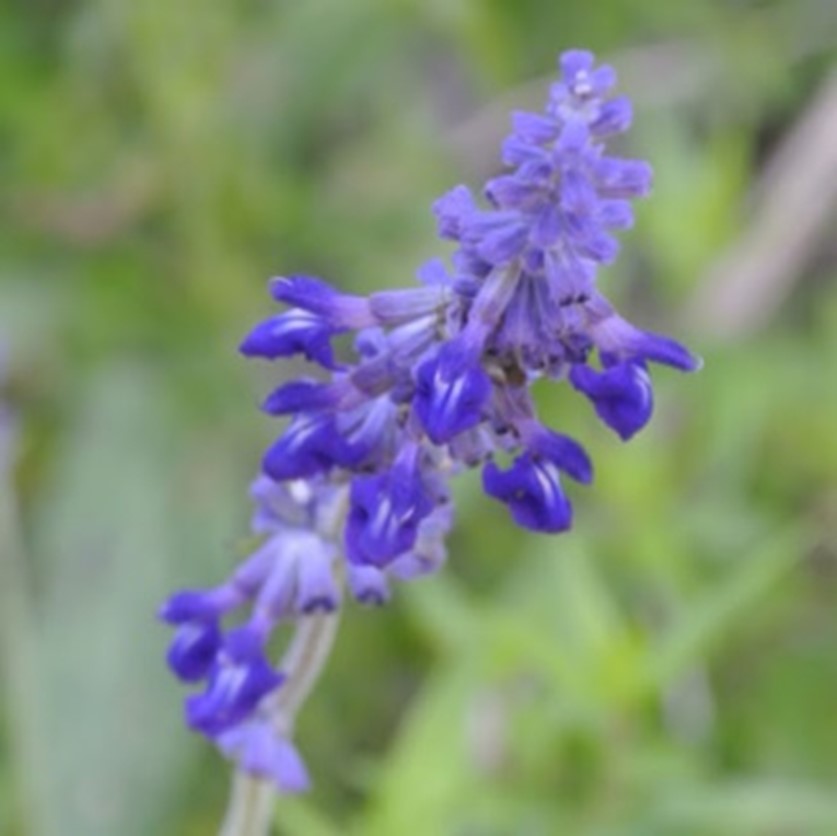Sage Blue
Salvia farinacea


Characteristics
- Type: Perennial
- Family: Lamiaceae
- Zone: 7 – 11
- Height: 2 – 3 Feet
- Spread: 2 – 3 Feet
- Bloom Time: May – Frost
- Bloom Description: Deep Blue
- Sun: Full Sun – Part Shade
- Water: Medium
- Maintenance: Low
- Flower: Showy
- Attracts: Butterflies, Hummingbirds
- Tolerate: Deer, Drought, Clay Soil, Dry Soil
- Texas Native
Culture
Sage Blue grows in average, evenly moist, well-drained soils in full sun to part shade. Tolerates poor soils and some drought. Mealy blue sage grows well in perennial borders and wildflower meadows. The foliage is aromatic and deer resistant. When new basal foliage appears, cut the old flower stems to keep the plants lush. Will bloom off and on throughout the summer. Butterflies, Bees, and hummingbirds enjoy the nectar. Mealy blue sage provides an attractive mass of color in beds, borders and naturalized areas. Wet soil will make the plant leggy and weak. It is an excellent plant for a flower bed, and is often planted in groupings to create an attractive mass of color. The leaves have a grayish cast which make a good contrast to lush green foliage of other plants.
Noteworthy Characteristics
Salvia farinacea is native to Texas and Mexico. This 2-3 ft. upright or sprawling perennial, usually forms a mound as wide as the plant is tall. Mealy sage is named for the mealy-white (sometimes purple) appearance of the sepals, which are covered with felted hairs. The blue flowers are 5-lobed and 2-lipped, 2/3 to 3/4-inch-long, with 2 stamens and 1 pistil. They have the usual sage fragrance. The long, narrow leaves grow in clusters, out of which grow the flower stems. The leaves may or may not have teeth. Dark-blue to white, tubular flowers are densely congested in whorls along the upper stems, creating a 3-9 in. spike. Gray-green, lance-shaped leaves are numerous, especially in the lower portion of the plant.
Problems
No serious insect or disease problems. Susceptible to downy and powdery mildew.
Garden Uses
Beds, borders, meadows, cottage gardens, cutting gardens, rock garden, mass planting, perennial garden.